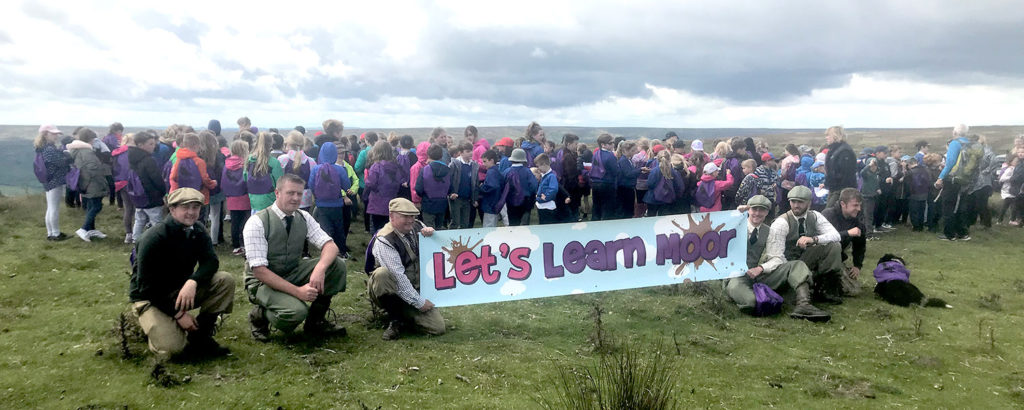[et_pb_section bb_built=”1″ fullwidth=”off” specialty=”off” next_background_color=”#000000″ inner_width=”90%” inner_max_width=”1086px”][et_pb_row _builder_version=”3.17.6″ custom_margin=”0px|||” custom_padding=”0px|||” width=”90%” max_width=”1086px”][et_pb_column type=”4_4″ custom_padding__hover=”|||” custom_padding=”|||”][et_pb_post_title _builder_version=”3.17.6″ comments=”off” featured_image=”off” custom_margin=”0px|||” custom_padding=”0px|||” /][/et_pb_column][/et_pb_row][/et_pb_section][et_pb_section bb_built=”1″ fullwidth=”on” specialty=”off” prev_background_color=”#000000″ next_background_color=”#000000″ inner_width=”90%” inner_max_width=”1086px”][et_pb_fullwidth_image _builder_version=”3.27.3″ src=”https://0ld.basc.org.uk/wp-content/uploads/2019/08/Grouse-Moor-2.jpg” /][/et_pb_section][et_pb_section bb_built=”1″ fullwidth=”off” specialty=”off” prev_background_color=”#000000″ inner_width=”90%” inner_max_width=”1086px”][et_pb_row _builder_version=”3.12.1″ custom_margin=”0px|||” custom_padding=”0px|||” background_position=”top_left” background_repeat=”repeat” background_size=”initial” width=”90%” max_width=”1086px”][et_pb_column type=”3_4″ custom_padding__hover=”|||” custom_padding=”|||”][et_pb_team_member _builder_version=”3.27.3″ name=”Gareth Dockerty” position=”BASC North regional officer” image_url=”https://0ld.basc.org.uk/wp-content/uploads/2019/07/Gareth.jpg” background_color=”#334965″ background_layout=”dark” saved_tabs=”all” body_font_size=”15px” header_text_color=”#ffffff” body_text_color=”#ffffff” header_font=”|700|||||||” header_font_size=”20px” box_shadow_horizontal_image_tablet=”0px” box_shadow_vertical_image_tablet=”0px” box_shadow_blur_image_tablet=”40px” box_shadow_spread_image_tablet=”0px” text_shadow_horizontal_length=”text_shadow_style,%91object Object%93″ text_shadow_horizontal_length_tablet=”0px” text_shadow_vertical_length=”text_shadow_style,%91object Object%93″ text_shadow_vertical_length_tablet=”0px” text_shadow_blur_strength=”text_shadow_style,%91object Object%93″ text_shadow_blur_strength_tablet=”1px” header_text_shadow_horizontal_length=”header_text_shadow_style,%91object Object%93″ header_text_shadow_horizontal_length_tablet=”0px” header_text_shadow_vertical_length=”header_text_shadow_style,%91object Object%93″ header_text_shadow_vertical_length_tablet=”0px” header_text_shadow_blur_strength=”header_text_shadow_style,%91object Object%93″ header_text_shadow_blur_strength_tablet=”1px” body_text_shadow_horizontal_length=”body_text_shadow_style,%91object Object%93″ body_text_shadow_horizontal_length_tablet=”0px” body_text_shadow_vertical_length=”body_text_shadow_style,%91object Object%93″ body_text_shadow_vertical_length_tablet=”0px” body_text_shadow_blur_strength=”body_text_shadow_style,%91object Object%93″ body_text_shadow_blur_strength_tablet=”1px” body_link_text_shadow_horizontal_length=”body_link_text_shadow_style,%91object Object%93″ body_link_text_shadow_horizontal_length_tablet=”0px” body_link_text_shadow_vertical_length=”body_link_text_shadow_style,%91object Object%93″ body_link_text_shadow_vertical_length_tablet=”0px” body_link_text_shadow_blur_strength=”body_link_text_shadow_style,%91object Object%93″ body_link_text_shadow_blur_strength_tablet=”1px” body_ul_text_shadow_horizontal_length=”body_ul_text_shadow_style,%91object Object%93″ body_ul_text_shadow_horizontal_length_tablet=”0px” body_ul_text_shadow_vertical_length=”body_ul_text_shadow_style,%91object Object%93″ body_ul_text_shadow_vertical_length_tablet=”0px” body_ul_text_shadow_blur_strength=”body_ul_text_shadow_style,%91object Object%93″ body_ul_text_shadow_blur_strength_tablet=”1px” body_ol_text_shadow_horizontal_length=”body_ol_text_shadow_style,%91object Object%93″ body_ol_text_shadow_horizontal_length_tablet=”0px” body_ol_text_shadow_vertical_length=”body_ol_text_shadow_style,%91object Object%93″ body_ol_text_shadow_vertical_length_tablet=”0px” body_ol_text_shadow_blur_strength=”body_ol_text_shadow_style,%91object Object%93″ body_ol_text_shadow_blur_strength_tablet=”1px” body_quote_text_shadow_horizontal_length=”body_quote_text_shadow_style,%91object Object%93″ body_quote_text_shadow_horizontal_length_tablet=”0px” body_quote_text_shadow_vertical_length=”body_quote_text_shadow_style,%91object Object%93″ body_quote_text_shadow_vertical_length_tablet=”0px” body_quote_text_shadow_blur_strength=”body_quote_text_shadow_style,%91object Object%93″ body_quote_text_shadow_blur_strength_tablet=”1px” position_text_shadow_horizontal_length=”position_text_shadow_style,%91object Object%93″ position_text_shadow_horizontal_length_tablet=”0px” position_text_shadow_vertical_length=”position_text_shadow_style,%91object Object%93″ position_text_shadow_vertical_length_tablet=”0px” position_text_shadow_blur_strength=”position_text_shadow_style,%91object Object%93″ position_text_shadow_blur_strength_tablet=”1px” box_shadow_horizontal_tablet=”0px” box_shadow_vertical_tablet=”0px” box_shadow_blur_tablet=”40px” box_shadow_spread_tablet=”0px” z_index_tablet=”500″]
Gareth lives in the North York Moors where most of the grouse moors in North England are. Working with the gamekeepers, estates and partner organisations across the moors is a very important part of his job.
[/et_pb_team_member][et_pb_text _builder_version=”3.27.3″ text_text_shadow_horizontal_length_tablet=”0px” text_text_shadow_vertical_length_tablet=”0px” text_text_shadow_blur_strength_tablet=”1px” link_text_shadow_horizontal_length_tablet=”0px” link_text_shadow_vertical_length_tablet=”0px” link_text_shadow_blur_strength_tablet=”1px” ul_text_shadow_horizontal_length_tablet=”0px” ul_text_shadow_vertical_length_tablet=”0px” ul_text_shadow_blur_strength_tablet=”1px” ol_text_shadow_horizontal_length_tablet=”0px” ol_text_shadow_vertical_length_tablet=”0px” ol_text_shadow_blur_strength_tablet=”1px” quote_text_shadow_horizontal_length_tablet=”0px” quote_text_shadow_vertical_length_tablet=”0px” quote_text_shadow_blur_strength_tablet=”1px” header_text_shadow_horizontal_length_tablet=”0px” header_text_shadow_vertical_length_tablet=”0px” header_text_shadow_blur_strength_tablet=”1px” header_2_text_shadow_horizontal_length_tablet=”0px” header_2_text_shadow_vertical_length_tablet=”0px” header_2_text_shadow_blur_strength_tablet=”1px” header_3_text_shadow_horizontal_length_tablet=”0px” header_3_text_shadow_vertical_length_tablet=”0px” header_3_text_shadow_blur_strength_tablet=”1px” header_4_text_shadow_horizontal_length_tablet=”0px” header_4_text_shadow_vertical_length_tablet=”0px” header_4_text_shadow_blur_strength_tablet=”1px” header_5_text_shadow_horizontal_length_tablet=”0px” header_5_text_shadow_vertical_length_tablet=”0px” header_5_text_shadow_blur_strength_tablet=”1px” header_6_text_shadow_horizontal_length_tablet=”0px” header_6_text_shadow_vertical_length_tablet=”0px” header_6_text_shadow_blur_strength_tablet=”1px” box_shadow_horizontal_tablet=”0px” box_shadow_vertical_tablet=”0px” box_shadow_blur_tablet=”40px” box_shadow_spread_tablet=”0px” z_index_tablet=”500″]
 Water on grouse moors has made recent headlines and driven online debate. Speculation and misunderstanding have given volume to false assertions and this needs to be addressed. The truth about water on the moors is far more complicated than a few spotlight tweets and gives added momentum to oversimplification. BASC’s North regional officer, Gareth Dockerty describes the truth behind water on the moors and why it is vital for our environment:
Water on grouse moors has made recent headlines and driven online debate. Speculation and misunderstanding have given volume to false assertions and this needs to be addressed. The truth about water on the moors is far more complicated than a few spotlight tweets and gives added momentum to oversimplification. BASC’s North regional officer, Gareth Dockerty describes the truth behind water on the moors and why it is vital for our environment:
History of water on the moors
Between 1950-70 government grants paid for the moors to be drained as a way of improving the agricultural output of the uplands. Once drained, the dry and degraded peat no longer acts like a sponge soaking up rainfall. Instead the gullies and grips get deeper, the water runoff increases opening patches of bare peat, and as a result the drier peat releases carbon back into the atmosphere. As a large percentage of our rainfall is in the uplands, before flowing downstream, this can potentially cause problems.
Keeping the right balance
Keepers do not want bone dry moors with big open patches of peat (nobody does). The drier the moor the less insects, and thus no food for the grouse chicks. The more plant diversity, the more insects and the more for all birds to eat! So, keepers and moor owners have played a key part in re-blocking grips and gullies, rewetting moorland and increasing the species diversity and helping mitigate the downstream flood risk by slowing the flow.
The latest research shows that good restoration burns improve the species diversity of vital water holding sphagnum mosses when compared to no management or mowing. This peat forming carbon locking moss can hold up to 26 times its dry weight in water (the equivalent of your average adult carrying a fully-grown rhino all day).
What is BASC doing?
BASC is funding key research into upland management via York University with partners ranging from water utility companies to conservation organisations. The research looks to further understand the role that restoration burning plays in upland management – the findings of which are due out in two years’ time.
We have also helped fund an independent film on innovate catchment techniques called ‘High Water Common Ground’ featuring the work of gamekeepers on the ground.
As part of Let’s Learn Moor, children learned about the journey of water from tiny raindrops in the uplands to water in their taps. Grouse moors are the beginning of this amazing journey and good management and decisions here are vital downstream.

BASC also uses other engagement events like Countryfile Live to get clear messages across to the public about the importance of grouse moors in protecting communities and preventing flooding. We also support the work of the regional moorland groups, who enable gamekeepers to speak directly to their communities.
Finally, we are working with stakeholders, policy makers and politicians to ensure that the shooting community are involved in decision making and our expertise is utilised.
A final thought
Remember just like the devastating wildfires that have hit moorlands recently, it is the gamekeepers who are working with upland communities during and after flood events, like those seen recently in the Dales. They are on the front line helping with the rescue and clear up process as part of the local communities.
[/et_pb_text][/et_pb_column][et_pb_column type=”1_4″ custom_padding__hover=”|||” custom_padding=”|||”][et_pb_sidebar _builder_version=”3.17.6″ area=”sidebar-1″ orientation=”right” custom_css_widget=”.pis-title {|| font-size: 16px;|| color: #078463;|| padding-bottom: 5px;|| line-height: 1.3em;|| font-weight: bold;||}||||||||.pis-excerpt {font-size:14px;}||” /][/et_pb_column][/et_pb_row][/et_pb_section]
